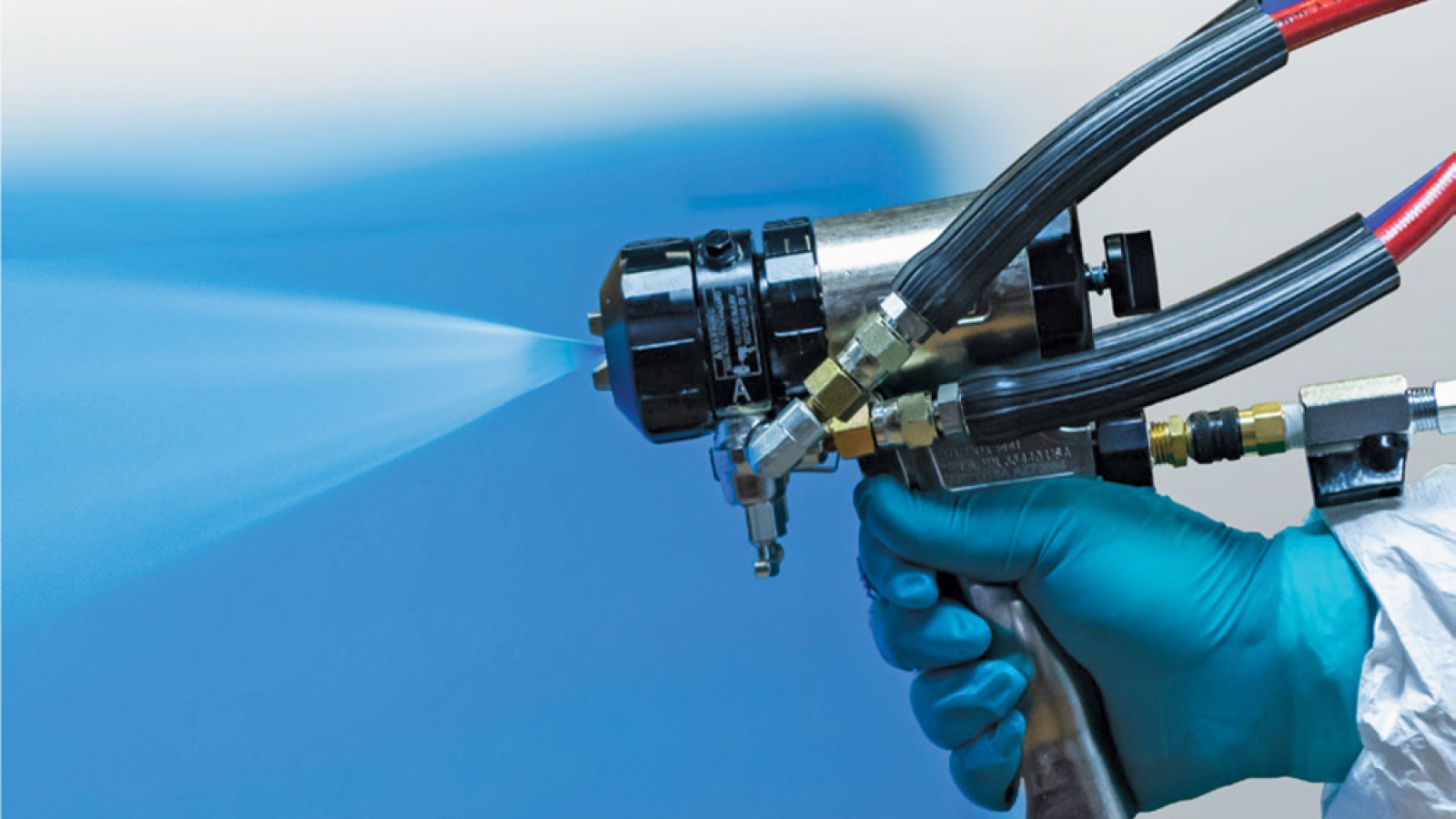Polyurea and polyurethane are used coatings, each with distinct properties and uses. While both offer surface protection, their unique traits cater to specific purposes. Knowing the variances between polyurea and polyurethane aids professionals in selecting the material for their requirements. This article delves into the disparities between these coatings, emphasizing their strengths and the scenarios in which they excel.
Overview of Polyurea
Polyurea is an elastomer formed by combining an isocyanate component with an amine-terminated resin through a chemical reaction that results in a polymer curing within seconds. This quick curing process is a defining characteristic of polyurea, enabling it to create a coating that solidifies rapidly and can be utilized shortly after application.
The swift curing nature of polyurea makes it advantageous for projects where downtime must be minimized. It also permits application in conditions such as high humidity or low temperatures, where other coatings may face challenges in proper curing. Additionally, polyurea’s flexibility is a benefit, as it can stretch and contract without fracturing, making it suitable for surfaces that move or expand, like pipelines, roofs, and industrial floors.
Polyurea is well known for its ability to resist water, chemicals, and wear. These characteristics make it a preferred option for use in situations where the coated surface is exposed to challenging conditions, such as in settings, wastewater treatment facilities, and heavy-duty machinery.
Understanding Polyurethane
Similar to polyurea, polyurethane is a polymer commonly used as a coating. It is produced by combining an isocyanate with a polyol. Although the chemical process resembles that of polyurea, the resulting material possesses properties. Polyurethane typically cures at a slower pace than polyurea, which requires hours to achieve maximum strength. This slower curing time can be beneficial when more time is needed to apply the coating evenly and thoroughly.
Polyurethane is recognized for its balance between flexibility and hardness. While it may be less flexible than polyurea it offers resistance to damage and abrasion making it suitable for applications where the coating must endure impacts or wear such as in industrial environments, automotive parts and high traffic flooring.
Apart from its durability aspects polyurethane also stands out for its appeal. It can be tailored to deliver an sleek finish making it a preferred option, for coatings that prioritize aesthetics.
Polyurethanes versatility makes it a great option, for settings such as spaces, showrooms and residential interiors where both functionality and aesthetics are valued.
Comparison Between Polyurea and Polyurethane
When deciding between polyurea and polyurethane (polyurea vs polyurethane) it’s important to consider factors like curing time, flexibility, durability and application environment. Polyureas quick curing process and flexibility make it ideal for projects that require speed and adaptability. Its ability to withstand conditions and resist chemicals and water makes it well suited for purposes in industrial and marine settings.
Polyurethane shines in situations where a blend of durability and visual appeal is needed. Its slower curing time allows for application, while its resistance to abrasion makes it suitable for areas with heavy foot traffic or surfaces that endure use. Polyurethane’s sleek, glossy finish also makes it a popular choice for coatings where both looks and protection matter.
Although both materials offer properties, their unique characteristics make them better suited for specific applications. Polyurea excels in speed and adaptability making it reliable, in demanding environments requiring performance under pressure.
Polyurethane is popular because it can combine toughness and visual appeal, creating an aesthetically pleasing finish for various environments.
Selecting the material for coating depends on the project’s requirements. If quick application and curing are crucial, along with the flexibility to adapt to surface movement, polyurea is likely the choice. This is particularly important in industries such as construction, where surfaces experience expansion, contraction, or movement while minimizing downtime.
On the other hand, if durability and a high-quality appearance are factors for the project, polyurethane might be more suitable. This is especially significant in settings where coatings need to endure impact and abrasion while maintaining an attractive look.
Both polyurea and polyurethane offer surface protection. Understanding their characteristics enables professionals to select the appropriate material for each application, ensuring that coated surfaces perform effectively under specific conditions.
In conclusion, polyurea and polyurethane serve as options, in coatings, each presenting specific benefits based on their intended use.
Polyurea’s quick curing time, flexibility, and ability to withstand conditions make it perfect for challenging marine uses. Polyurethane strikes a balance between hardness, longevity, and visual attractiveness, making it a great option for spaces and high-traffic areas that require both functionality and aesthetics. By grasping the distinctions between these substances, experts can make choices that result in improved outcomes and extended protection.

